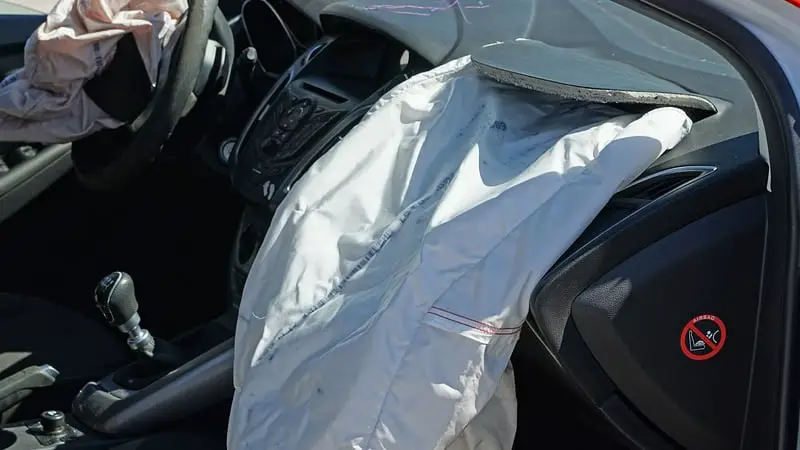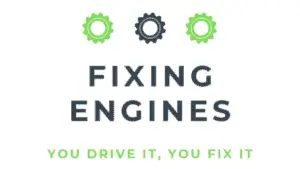Airbags greatly reduce the damage you sustain in a car accident. But they can potentially be an obstacle when trying to flee the vehicle. This is especially relevant for police officers who often have to perform PIT maneuvers and other risky car chases that can deploy the airbag and obstruct their movement. So, do police cars still come with airbags?
Police cars are equipped with airbags for the safety of the passengers. Police vehicles are essentially regular cars with specific modifications. So, they are packed with standard safety gear, including airbags.
In this article, we are going to inspect a typical police car in more detail. We will highlight the standard gears that you can normally expect to find inside a cop car and see how these tools help officers in doing their duty.
What Are Police Cars Equipped With?
On the surface, police cars have many features that give them distinction from all other vehicles you see on the streets. But essentially, a police vehicle starts out as a normal car, which is then modified to serve people on the force. These modifications are made with the needs of police officers in mind.
So, here are some of the common equipment a police car comes equipped with:
Audible and Visual Warning Equipment

These are the standout features of any police vehicle. The police siren is one of the more common sounds in any city or metropolis backdrop. And you also have a megaphone attached to the roof. Officers utilize these tools to attract the attention of other motorists and passers-by.
In terms of visual warning equipment, you have easily recognizable red-blue flashlights. These lights are an indication to other people on the streets, on foot, or driving a car, that they need to stay clear of the onrushing vehicle.
Another recognizable element is the stickers and markings on the car. All these equipment also act as a visible, mobile deterrent to crimes. Plus, these markers can provide a feeling of safety for people roaming the streets.
Safety Gears
In the line of duty, a police officer may face any number of emergency situations. As such, they carry certain items in their car that can aid them in different situations. Such items include an AED (automated external defibrillator), first aid kits, lifebuoys, safety cones, barrier tapes, fire extinguisher, etc.
You can expect any number of these items on an active police car.
Communication Equipment
Communication is paramount for any active officers. As such, their vehicles are stocked with devices that can guarantee consistent communication with the police station. All police cars will have two-way radio in order to communicate with the base. This is how they are informed of any ongoing crime or the report of any incident that requires their attention.
They also have megaphones or bullhorns for speaking with people on the street without leaving the car.
In addition, many modern police cars can also have a GPSemergencies, a laptop, a built-in monitor, etc. These devices can help the officers acquire valuable information in a short time during an emergency. The computer has access to the internet and the police database, which can make police work more convenient and efficient.
Suspect Transport Enclosures
On-duty officers often have to arrest or temporarily detain a suspect. For this reason, the back of the police car is reinforced with metal or steel grills. The suspect is put into handcuffs and is placed in the backseat. The enclosure prevents the suspect from doing any harm to the officers.
Do Police Cars Have Airbags?

Despite the numerous modifications, a police car is still just a car. And airbags have been a staple of vehicle safety equipment for decades now. So, it is no surprise that any police vehicle will also house at least one airbag for the passenger seat. Often, it comes with two airbags for both the front seats.
Now, one might think of a potential issue here. Police cars are often involved in risky car chases. And in many cases, they have to perform a PIT maneuver which can potentially fire off the airbag.
This airbag can then impede the movement of the officer, which can potentially allow a criminal or suspect to flee the scene. The deployment of the airbag can also damage valuable police equipment like the radio or any onboard laptop.
However, the airbag being deployed during a standard PIT maneuver is rare. This is because the airbag only fires when there is a head-on collision. And police officers are trained to engage in a PIT maneuver with the side or bumper of the vehicle. So, there is little risk of the airbag coming out.
In the case of front-on collisions, police officers are just as vulnerable to serious damage as normal passengers. So, the added level of safety provided by airbags is more important than the potential obstruction it may pose.
This is why you will invariably find that police cars have airbags built-in for the safety of the officers.
Are There Cars with No Airbags?
Now, despite their great benefits, there are certain scenarios where a car will not feature any sort of airbag. Probably the most famous example of airbags being absent is with racing cars.
The cars you see professionals drive in Formula-1 or NASCAR do not have airbags. They can get away with this because these vehicles have several other safety measures in place. The engineers and officials of these sports feel these measures are appropriate and sufficient enough to the point where airbags become redundant.
But we must stress that these race cars are not normal vehicles. Any car that is intended for driving on the streets should be equipped with the proper number of airbags.
Conclusion
So, airbags are as commonplace in police cars as it is in most other vehicles. A police car may be modified with numerous distinguishing features. But the measures taken to ensure the safety of passengers do not need to be tempered with.

